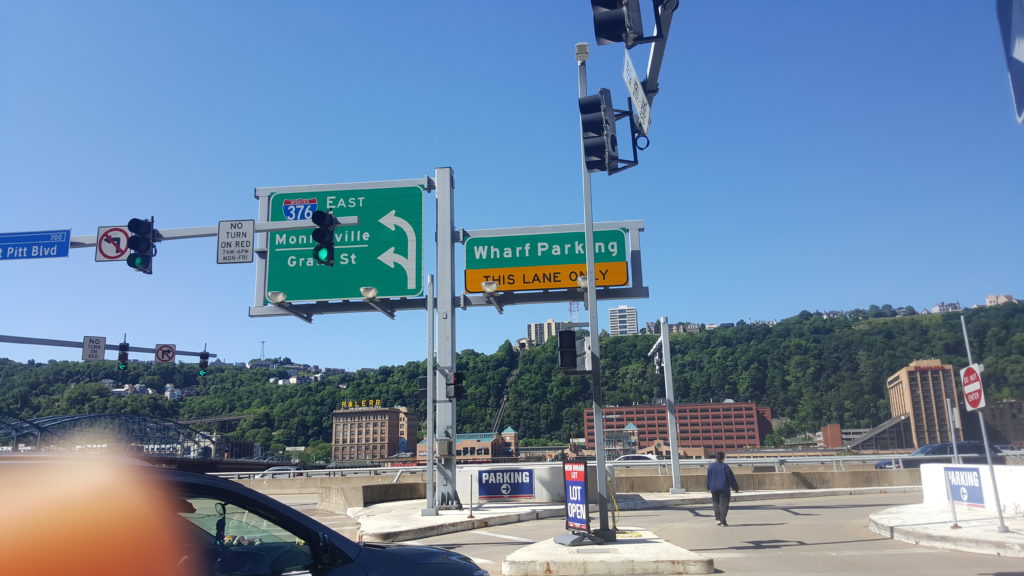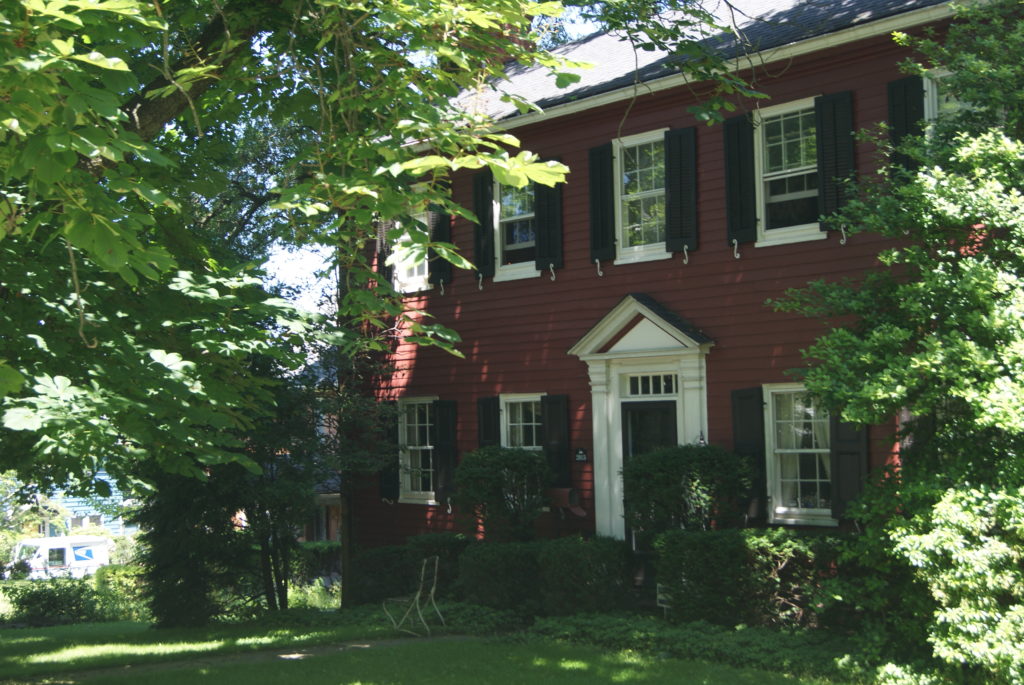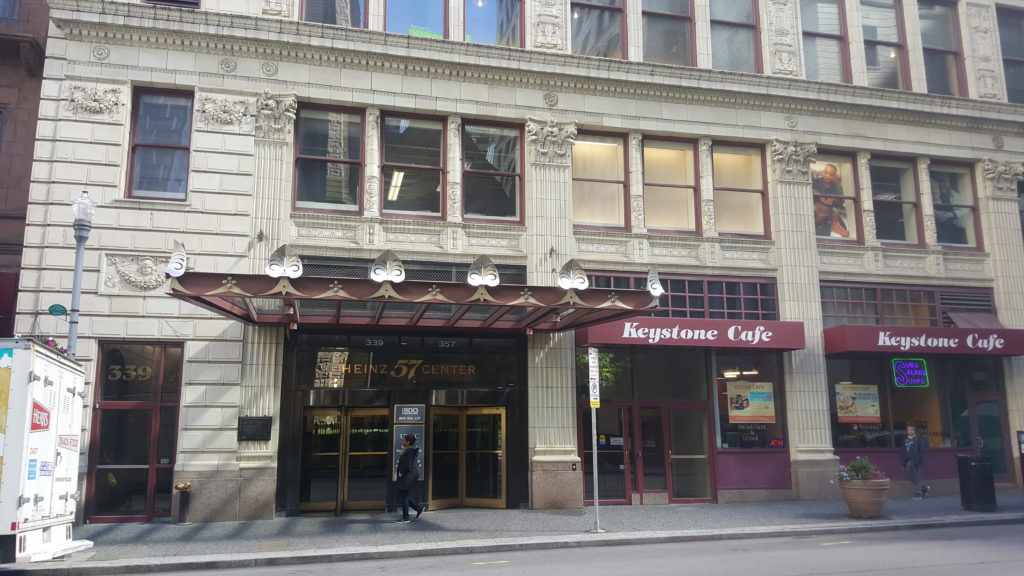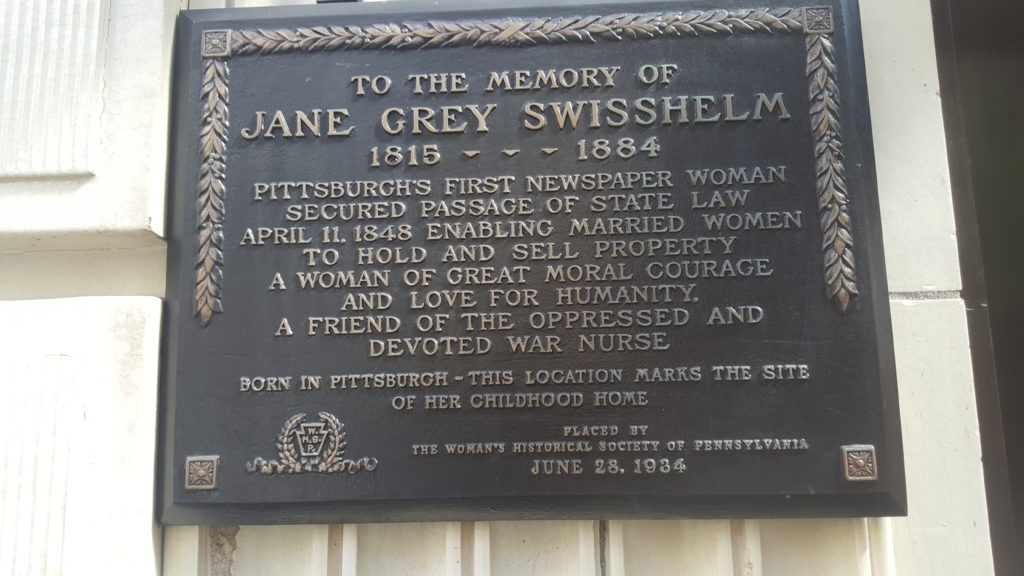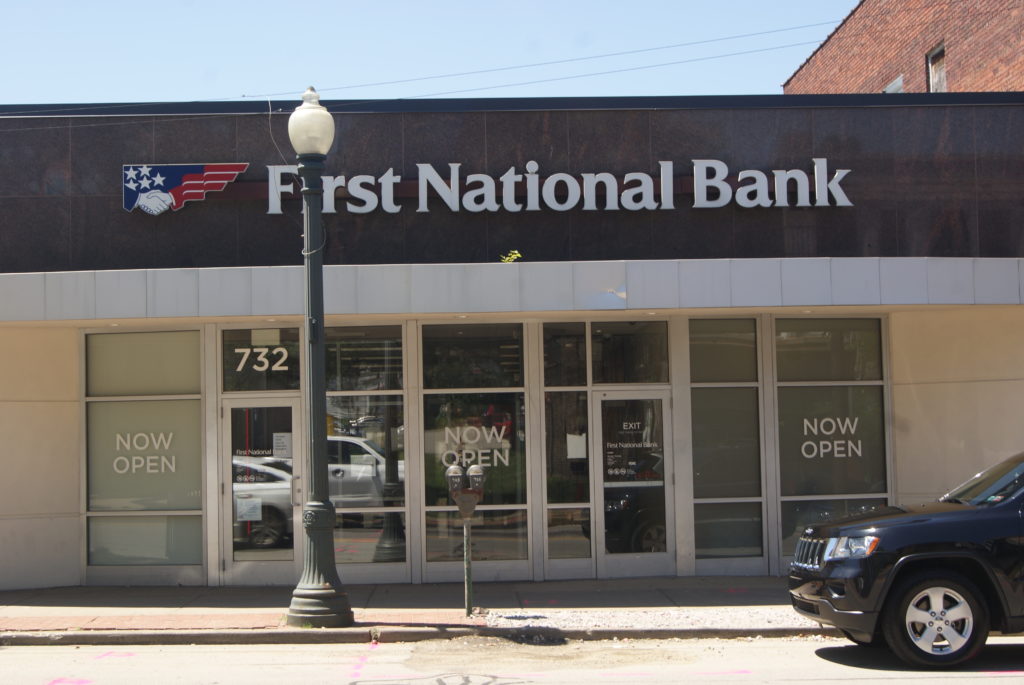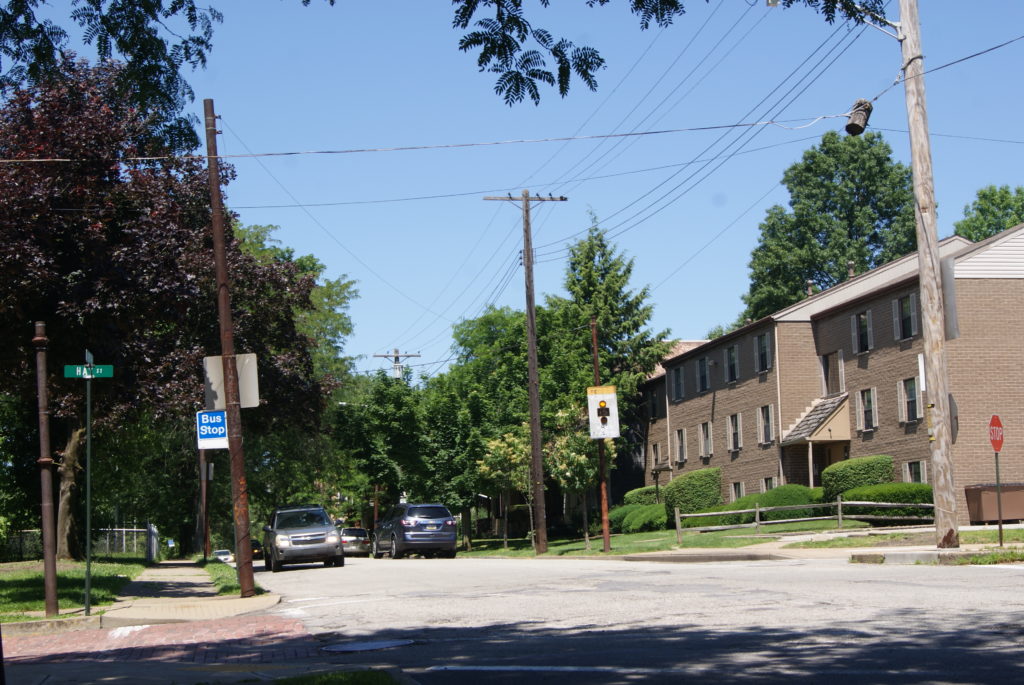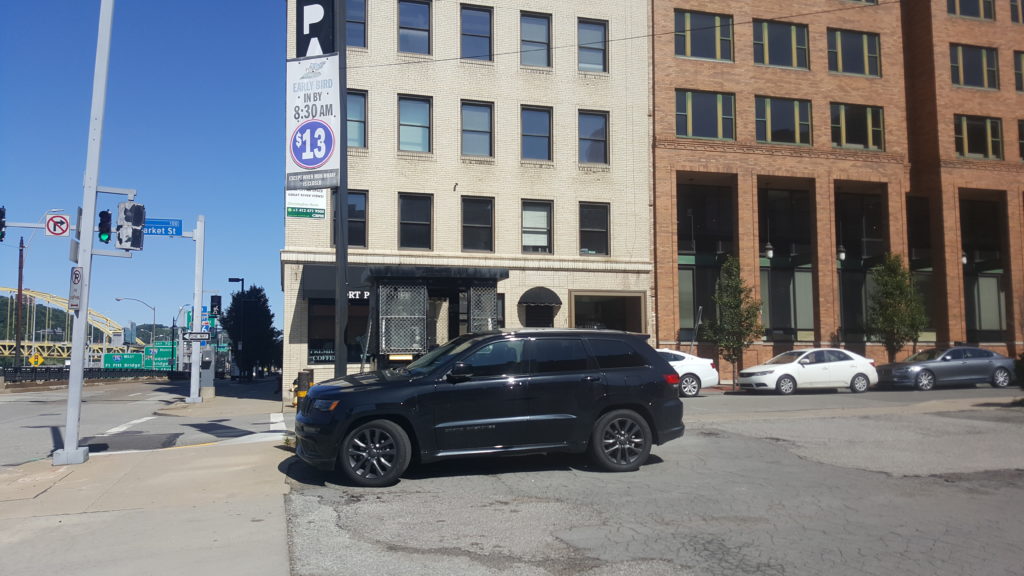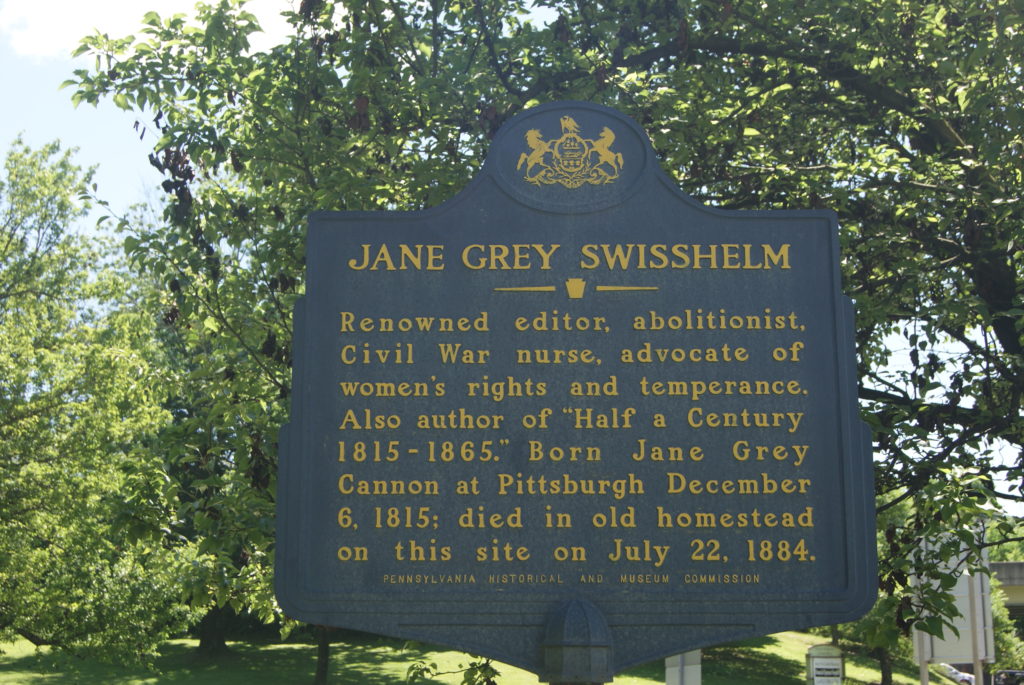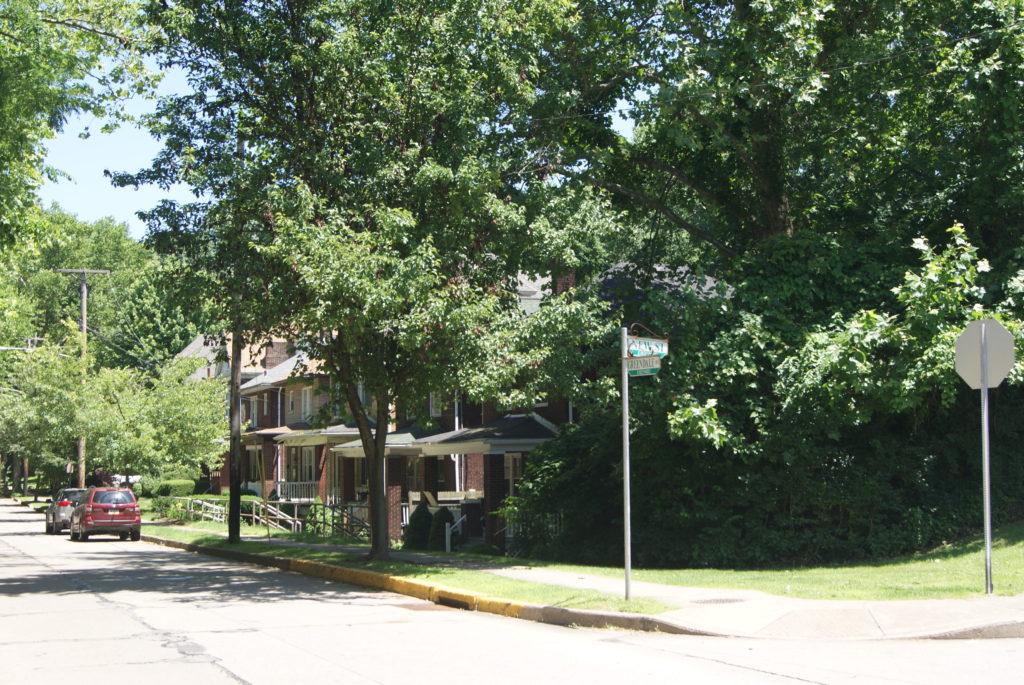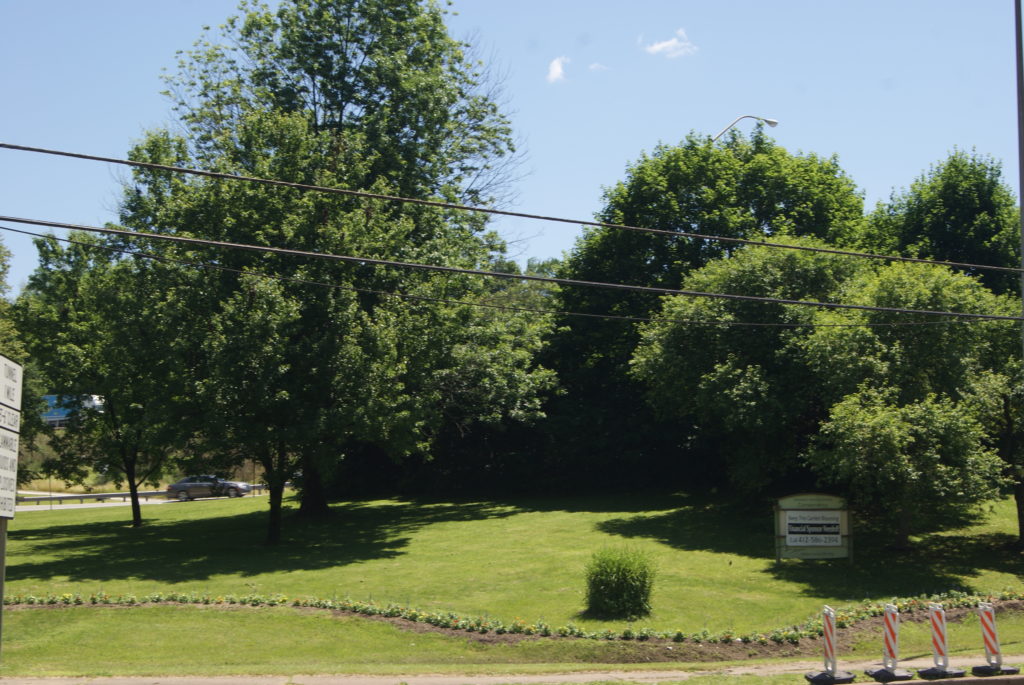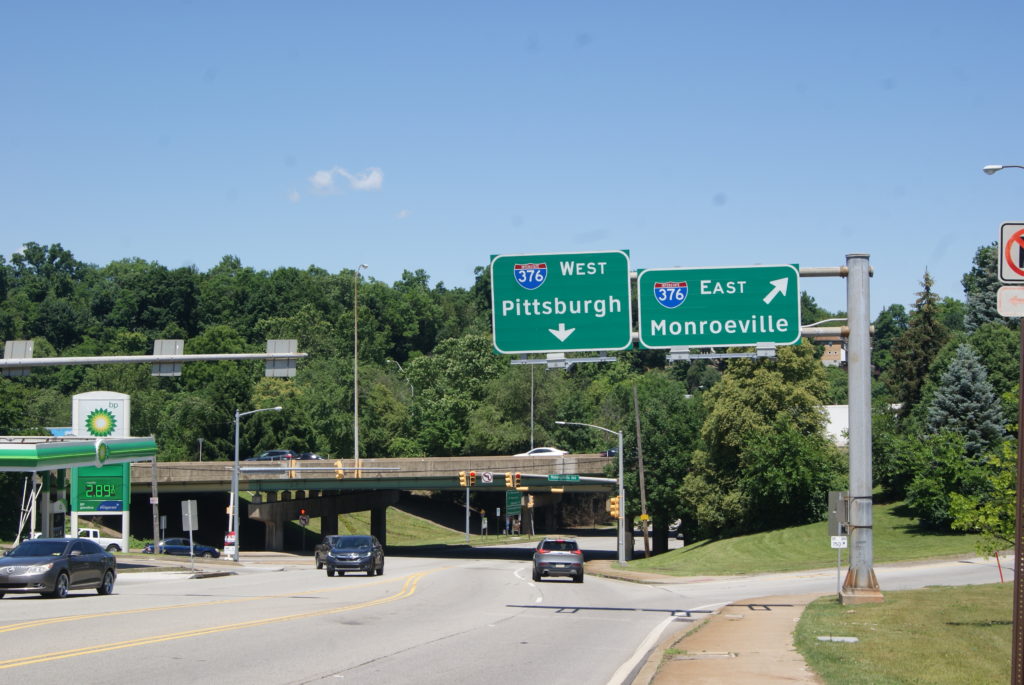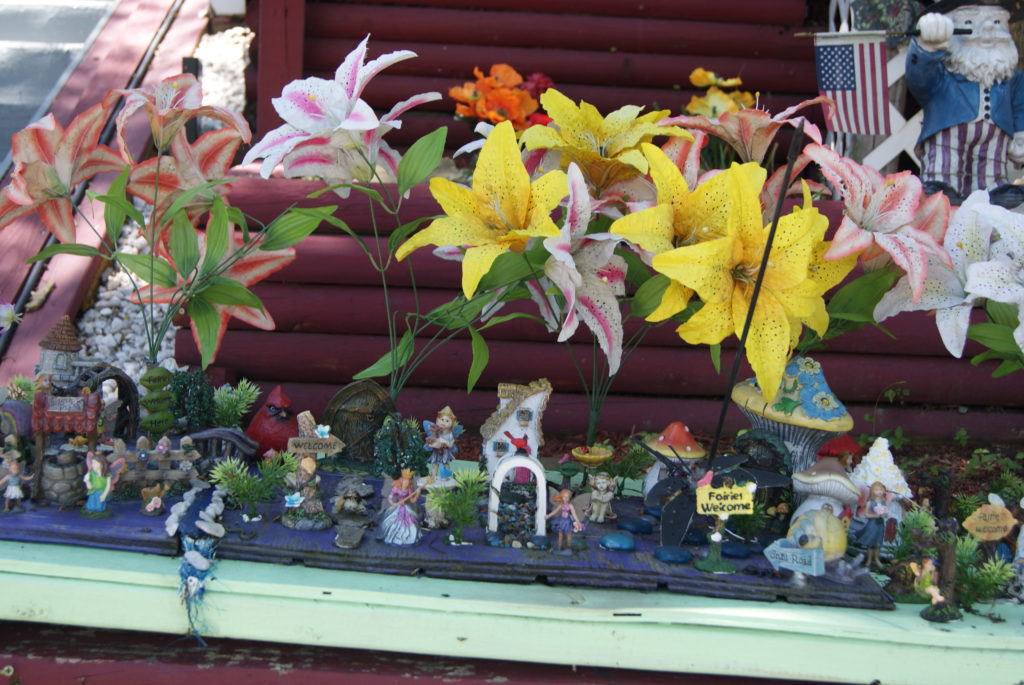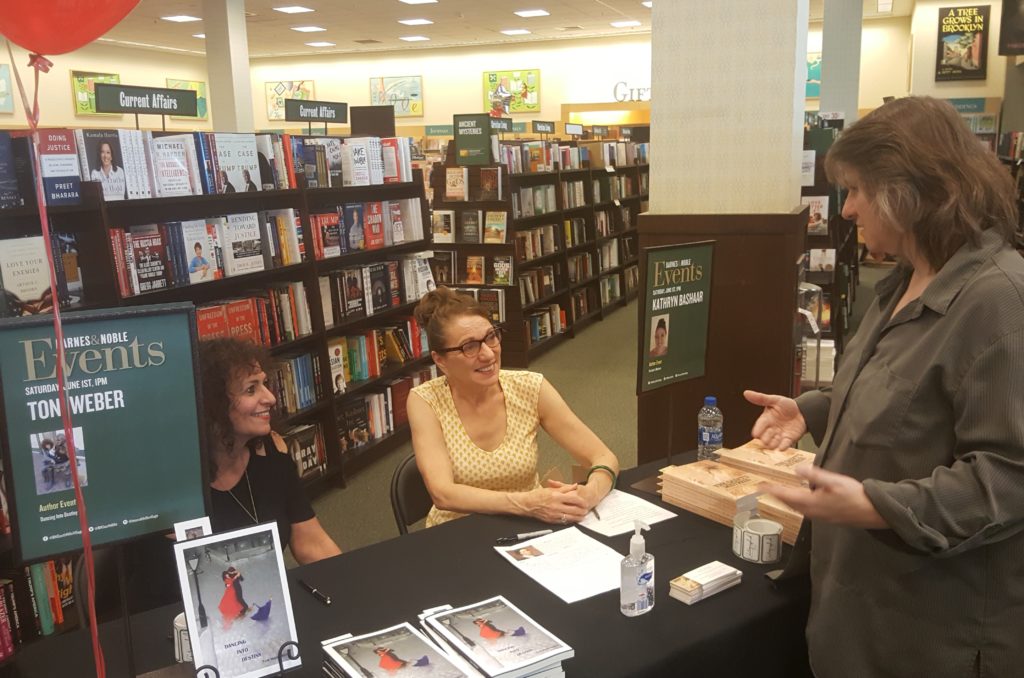
My research for my previous book, The Saint’s Mistress, took me as far as Italy. We’re staying closer to home as I research Righteous, but we’re still making interesting discoveries. Last week, looking for the spot where my two main characters met, we hiked the very pleasant Nine Mile Run Trail.
The summer day was perfect for our quest. We knew that James and Jane met along Nine Mile Run, in the fateful scene described in this excerpt from my novel-in-progress. And we knew that it must have been along the portion of the Run nearest the Swisshelm farmstead. We decided to walk the whole of the Nine Mile Run trail in Frick Park, and see if we could guess where Jane’s carriage may have overturned in the swollen run one early-spring day.
Nine Mile Run Trail
The trail is beautiful, for bikers, hikers or just plain loafers. Benches sit invitingly at several points along the path, where a hiker may rest for a few minutes or a loafer can sit and read a book, daydream or watch the bees and butterflies. On the day we walked the trail, we saw black-eyed Susans, coneflowers, crown vetch, daisies, and thistles, along with several other wildflowers that we couldn’t identify. It’s an easy hiking trail, 3.6 miles in and out, mostly flat with a few short rises and a mix of sun and shade. Although it passes directly under the Parkway East at one point, the main sound is birdsong.
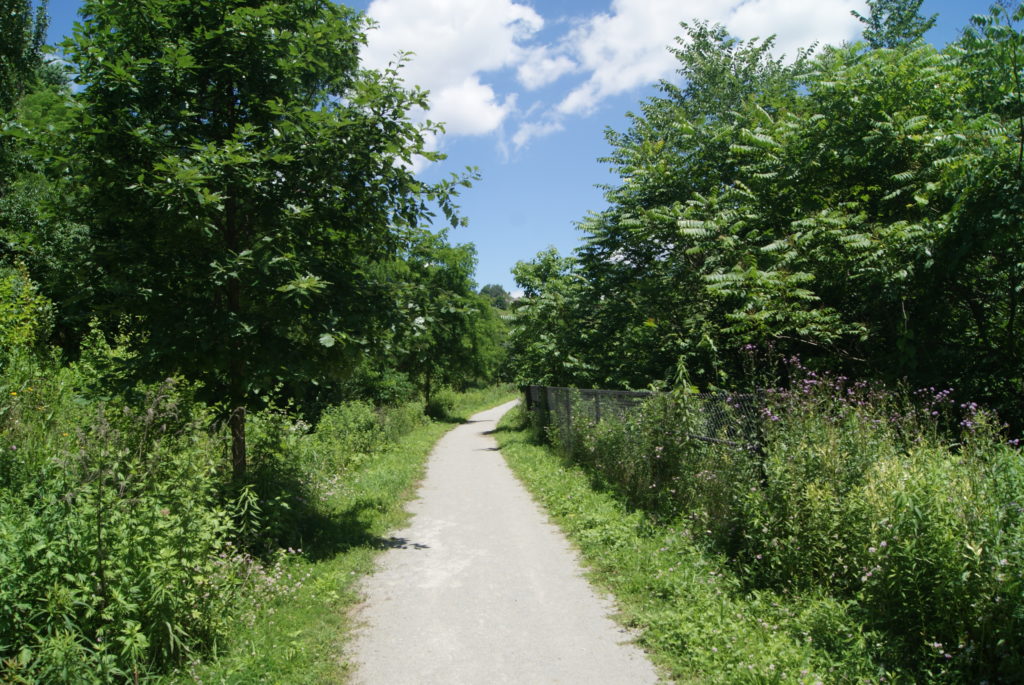
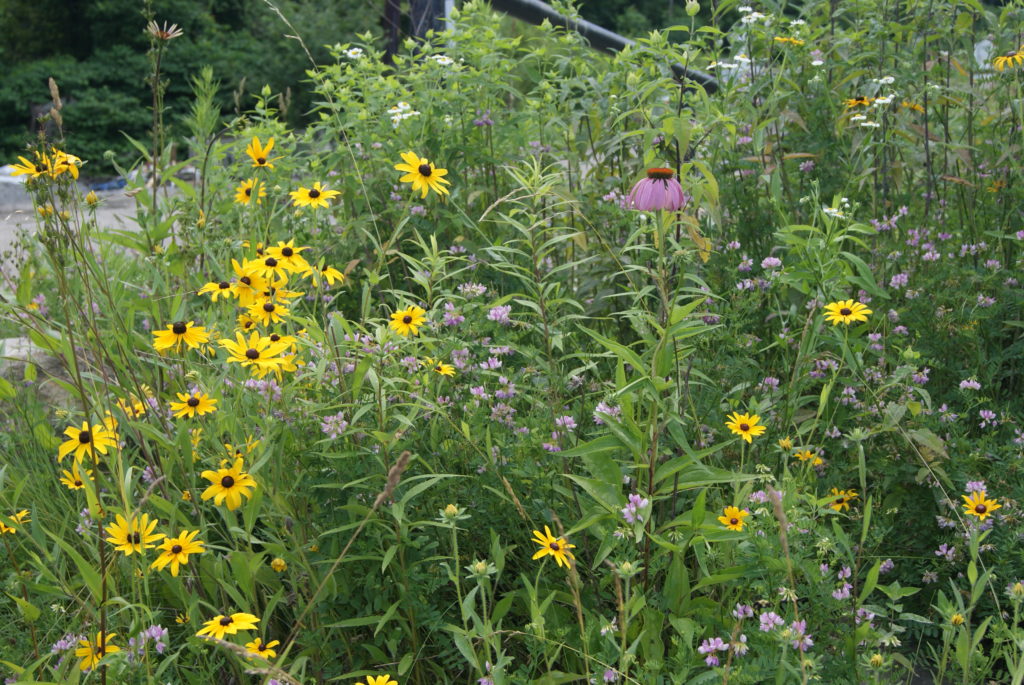
The land along the Run served as a slag dump from the 1920s until the 1970s. Over the course of that time, Pittsburgh’s many mills deposited about 200 million tons of slag. Between 2003 and 2007, the U.S. Army Corps of Engineers invested $7.7 million into restoring 2.2 miles of the stream. It was one of the largest urban-stream restorations undertaken in the United States. They uncovered the stream channel in many places where it was blocked or culverted. Wetlands and animal habitat have been restored. The work continues, as you can see in the picture below.
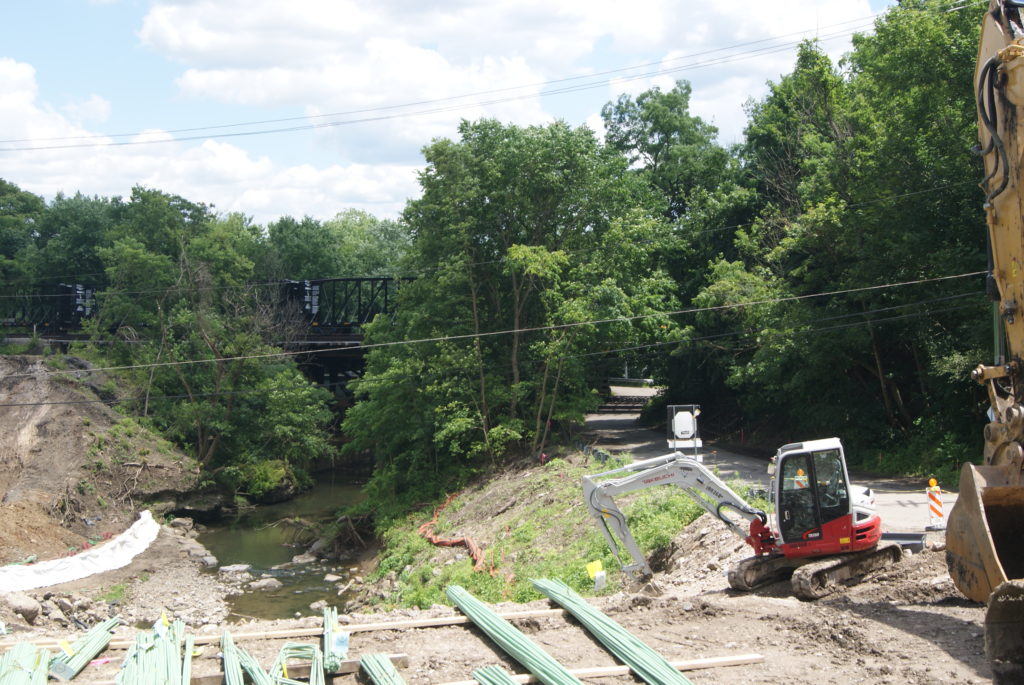
The stream is clean enough that we saw several people fishing for bass near where it empties into the Monongahela River.
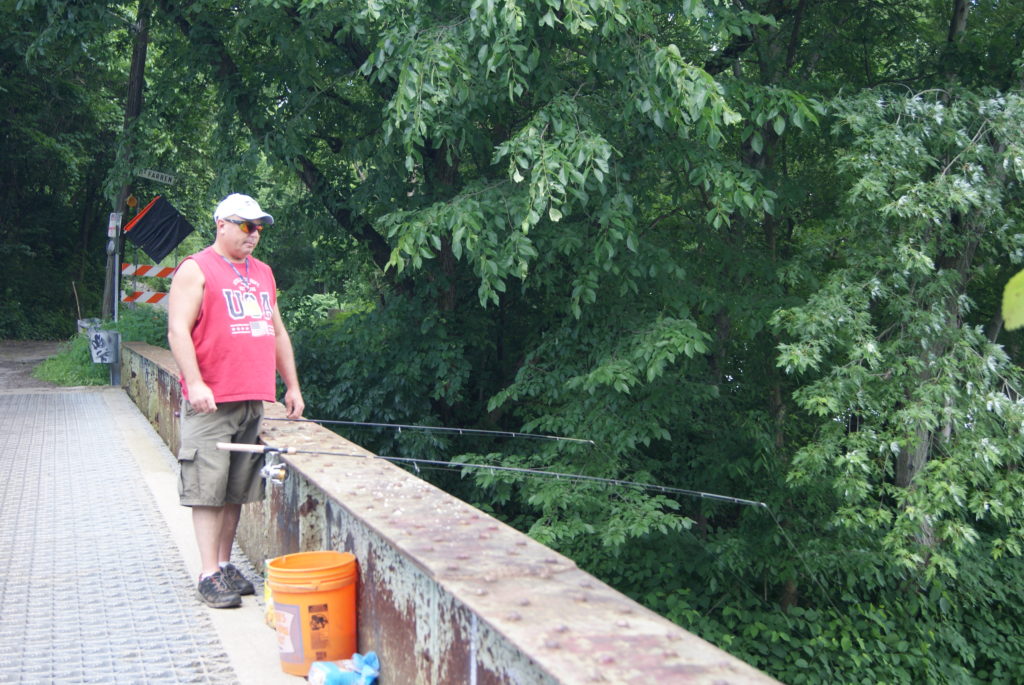
The trail connects the main body of Frick Park with the Monongahela River. Al and I identified what I think a likely spot for Jane’s carriage to have overturned, leading to her rescue by her future husband. It’s near the Swisshelm farmstead, in a fairly deep section of the Run, right above a rocky waterfall.
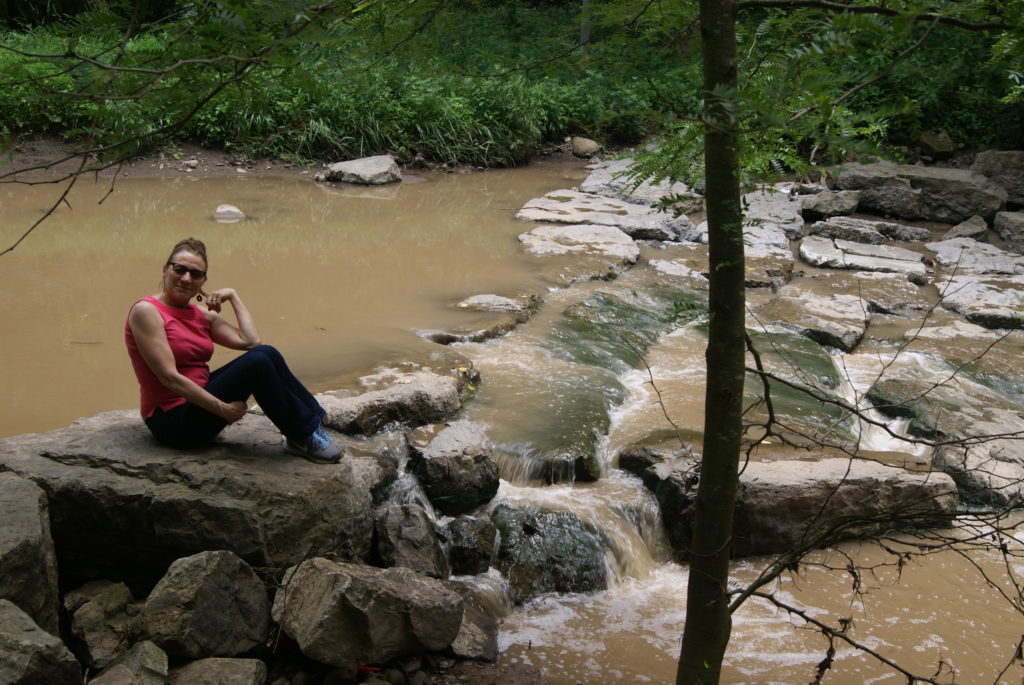
History of the Site
James Swisshelm’s father, John, a Revolutionary War veteran, endured the bitter winter at Valley Forge in 1778. John’s first wife died after bearing him 3 sons. He then married his second wife, Mary Elizabeth Miller, at some point before 1808. She was no more than 25 years old. He would have been nearly 50. In 1808, John bought 162 acres in the area called Nine Mile from William and Mary Pollack for one thousand pounds.
John and Mary Elizabeth had at least six children: Eva born 1808, James born 1810, Samuel born 1815, Margaret born 1817, William born 1821 and Henry born 1827. Some sources mention two additional children, who may not have survived infancy. I’ve made the decision to write a few of these siblings out of my novel. Five brothers and sisters is a lot for a reader to keep track of!
John Swisshelm disinherited his three sons by his first marriage and both of his daughters. His will left his estate to his wife, Mary Elizabeth, an unusual step in an era when women’s property rights were very limited. After her death, the estate was to be divided equally among their four sons. As I show in my novel, this controversial will led to a lot of bitterness in the Swisshelm family, especially between James and Jane. The family story ran that in his old age John “became blind and when the time came to make his will desired that all of the children should share and share alike in the estate,” but that Mary Elizabeth “had two wills prepared, one the way John desired and the second the way she desired. She had the first read to him and had him sign the second.”
Lawsuits over the property continued well into the 1860s. But, today, that battleground is a lovely and peaceful place to spent a summer afternoon.
Sources:
Jane Grey Swisshelm, An Unconventional Life; Sylvia D. Hoffert; University of North Carolina Press; 2004
https://www.yelp.com/biz/nine-mile-run-watershed-association-pittsburgh


